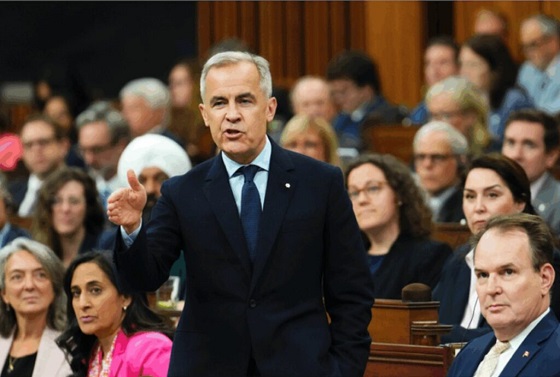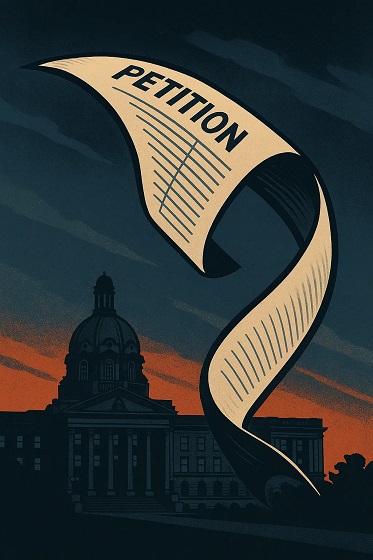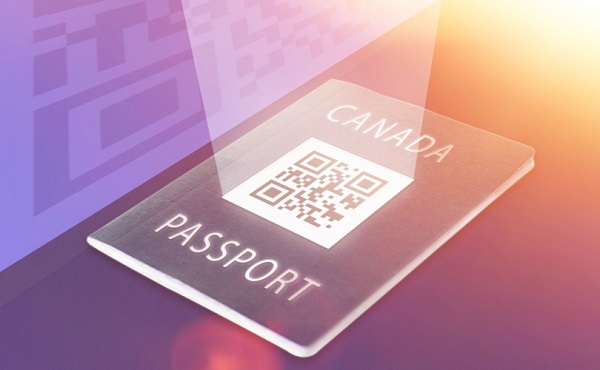National
Parliament’s Debate on Bill 377: A Battle for Transparency, Accountability, and the Control of National Security

Inside the Committee Circus: How Bill 377 Became a Battleground for Liberal Control Over Parliamentary Transparency!
In what could only be described as a bureaucratic circus, the Standing Committee on Procedure and House Affairs met to discuss Bill 377—a straightforward proposal that would give Members of Parliament (MPs) the right to apply for security clearances. What should have been a common-sense debate about empowering elected officials to do their jobs quickly turned into a showcase of Liberal fear-mongering, bureaucratic hand-wringing, and hypocritical stonewalling. The debate was rich in procedural distractions, leaving the core issue—government transparency—buried under layers of red tape.
The Fight for Transparency in Parliament: What CSIS and the PMO Had to Say
The debate over Bill 377—the proposal that would allow Members of Parliament (MPs) to apply for security clearances—kicked off with testimony from officials who wield significant influence over national security. First up was Nicole Giles, a representative from CSIS (Canadian Security Intelligence Service), and Sean Jorgensen, a senior official from the Prime Minister’s Office (PMO). Their comments set the stage for the battle between parliamentary transparency and bureaucratic control that would dominate the session.
Nicole Giles, representing CSIS, emphasized the importance of the security screening process in protecting national security and maintaining trust between the government and its citizens. She detailed how the security clearance process involves a rigorous collection of personal information and a careful vetting of individuals to assess their reliability and loyalty to Canada. According to Giles, this process is meant to ensure that those granted access to classified information can be trusted to protect it. But here’s the kicker: while CSIS insists that its process is designed to be rigorous, the question of who is deemed trustworthy seemed to stop at the doorstep of Parliament.
Giles explained that the process for obtaining security clearances involves informed consent and the use of data from law enforcement and intelligence sources. “The decision to grant a security clearance is made based on this evidence, ensuring individuals can be trusted to safeguard national security,” she said. Fair enough—but the fact that elected MPs are not included in this system, while low-level staffers and bureaucrats are, seemed like a glaring oversight that Bill 377 aimed to correct.
On the other side of the debate, Sean Jorgensen from the PMO seemed far more concerned with maintaining the status quo. Jorgensen echoed many of the typical bureaucratic fears about expanding access to security clearances, raising concerns about the potential for MPs to access sensitive information without the proper need-to-know basis. His testimony was filled with vague warnings about the risks of allowing more people into the security bubble, suggesting that MPs could pose a risk if not properly controlled.
But Jorgensen’s real agenda was clear: he wasn’t there to talk about enhancing transparency or improving parliamentary oversight. He was there to protect the PMO’s stranglehold on information. By casting doubt on whether MPs should even have the right to apply for security clearances, he was reinforcing the bureaucratic gatekeeping that has allowed the PMO to keep a tight grip on sensitive national security information.
Jorgensen and Giles set the stage for what would become a clear battle: Bill 377 wasn’t just about security clearances. It was about power—specifically, who holds it and who has access to the information that shapes the nation’s security policy. With CSIS and the PMO officials framing the debate, the scene was set for the Liberal swamp to defend their turf against a growing demand for accountability and transparency from parliamentarians.
What became apparent throughout the session is that while Giles and Jorgensen were trying to paint a picture of security concerns, the reality was that their testimony boiled down to protecting the existing system. The bureaucratic elite, including the PMO, seemed less interested in guarding national security and more interested in keeping MPs in the dark—ensuring that only a select few in the PMO and bureaucracy had the keys to the national security kingdom.
This fear of transparency would soon become a central theme as Conservative MPs like Alex Ruff and Eric Duncan took the floor, battling against the Liberal excuses and bureaucratic red tape designed to keep Parliament out of the national security loop.
Alex Ruff: The Champion of Accountability
Conservative MP Alex Ruff, the driving force behind Bill 377, came to the committee prepared to lay down a case so obvious it’s almost laughable that it needed to be debated. Ruff’s message was refreshingly simple: MPs should have the right to apply for security clearances, just like any other government official, intern, or low-level bureaucrat. And let’s not forget, we’re talking about Members of Parliament—elected officials responsible for voting on national security budgets and overseeing security policies that protect Canadians. How, Ruff asked, is it possible that these elected officials can’t even apply for the same clearances that government staffers are routinely granted?
Ruff’s frustration with the current system was evident from the start. As he rightly pointed out, the fact that interns—yes, interns—working in ministers’ offices can receive security clearances, while MPs are kept out of the loop, is nothing short of absurd. “If interns working in ministerial offices are given security clearances, why should MPs be left out of the loop?” Ruff questioned, nailing the fundamental issue with brutal accuracy. This isn’t some wild Conservative push for immediate access to classified documents. Ruff wasn’t demanding that MPs be handed national secrets on a silver platter. Instead, he was making the logical, common-sense argument that MPs—like everyone else—should have the opportunity to be vetted through the rigorous clearance process that is already in place.
Let’s stop for a second and think about the insanity of the current system. On one hand, you’ve got MPs, individuals who are entrusted by the Canadian people to make critical decisions affecting national security, being treated as though they’re untrustworthy amateurs. On the other hand, the same government hands out clearances to interns and bureaucrats without hesitation. Ruff was right to call this out for the farce that it is. The current setup not only undermines the authority of Parliament, but it also weakens the entire oversight process by keeping elected officials in the dark.
But Ruff wasn’t just there to point out the absurdity of the system—he was there to expose the real agenda behind the Liberal opposition to Bill 377. As the session dragged on, it became increasingly clear that the bureaucratic establishment and Liberal MPs weren’t interested in transparency. No, their goal was simple: maintain control. The PMO and its bureaucratic foot soldiers have grown accustomed to controlling access to information, shielding themselves from real scrutiny and accountability. And they’re desperate to keep things that way.
Ruff called out their tactics head-on. The Liberals, along with their bureaucratic allies, were trotting out every fear-mongering excuse they could think of. They raised hypothetical risks of MPs misusing classified information, warned of the dangers to international relations, and essentially treated elected officials like they couldn’t be trusted with the same basic tools the government hands out to junior staffers. Ruff saw right through it, and so should everyone else. This isn’t about protecting national security—this is about protecting power. The Liberals are terrified that giving MPs the ability to apply for clearances will disrupt their monopoly on sensitive information and weaken their ability to control the narrative.
Ruff’s argument is grounded in common sense and fairness. He’s not asking for special treatment—he’s asking for elected MPs to be held to the same standards as any other government official. The idea that MPs—individuals who represent the Canadian people—can’t even apply for a security clearance is insulting to the entire democratic process. By denying MPs this right, the Liberals are effectively saying that the public’s elected representatives can’t be trusted, and that only unelected bureaucrats should be allowed access to critical national security information.
What makes Ruff’s position even more powerful is that it’s not partisan—it’s pragmatic. He’s advocating for a system where MPs, regardless of their political affiliation, have the tools they need to do their jobs effectively. In fact, Ruff’s call for MPs to be allowed to apply for clearances is one of the most basic steps toward ensuring that Parliament functions as it should—as a body that can oversee and hold the government accountable on national security matters.
Yet, the response from the Liberal swamp was predictably hostile. They threw up bureaucratic roadblocks, introduced irrelevant procedural delays, and employed scare tactics to stall any real progress. The Liberals don’t want MPs—especially opposition MPs—having access to sensitive information, because it would mean that Parliament could finally hold the government accountable on key national security issues. They are far more interested in maintaining the status quo, where the PMO and bureaucrats have a stranglehold on information and can keep MPs—and by extension, the Canadian public—in the dark.
Ruff’s clarity of purpose stood in stark contrast to the bureaucratic noise surrounding him. He didn’t overcomplicate things. His message was straightforward: MPs need to have the right to apply for security clearances to do their jobs. And anyone who opposes that isn’t just standing in the way of Bill 377—they’re standing in the way of democracy and government accountability. Ruff’s push for common-sense reform is exactly what Parliament needs, and the Liberal resistance to this bill is nothing more than a desperate attempt to protect their power and secrecy.
Sherry Romanado: The Defender of the Status Quo
Liberal MP Sherry Romanado was one of the first to throw up procedural roadblocks during the committee’s debate on Bill 377. Rather than focusing on addressing the obvious issue—whether elected MPs should have the right to apply for security clearances—she chose to bog the discussion down with irrelevant questions designed to create new problems rather than solve the existing ones. Romanado fixated on the bureaucratic process of obtaining these clearances, questioning whether MPs should even have the right to apply in the first place.
She asked questions like, “Who would determine whether MPs should qualify for a security clearance?” and suggested that some kind of administrator or gatekeeper should be responsible for deciding which MPs could apply. This is classic Liberal strategy: instead of embracing transparency and accountability, she advocated for more layers of red tape and procedural delays. Her line of questioning wasn’t about protecting national security—it was about slowing down the process and keeping MPs, especially those outside the Liberal bubble, out of the loop.
Romanado’s approach was a transparent attempt to stall. By adding needless bureaucratic hurdles, she hoped to wrap the issue in so many layers of bureaucracy that it would get stuck in procedural purgatory. And that’s exactly what the Liberal swamp thrives on: bureaucratic dead-ends and vague questions designed to protect power and secrecy rather than empower the people’s representatives. By the end of her remarks, it was crystal clear—Romanado wasn’t interested in empowering MPs to fulfill their oversight role. She was laser-focused on maintaining the status quo and keeping control firmly in the hands of the PMO and bureaucrats.
BS Meter: Extremely High
Romanado’s entire line of questioning was pure bureaucratic theater, aimed at stalling real progress and keeping MPs in the dark. Her insistence on adding administrators or gatekeepers to the process was a desperate attempt to create roadblocks where none are needed. Romanado wasn’t working to protect national security; she was working to protect the Liberal power structure. This wasn’t about security—it was about control.
Marie-Hélène Gaudreau: Caution Without Vision
Bloc Québécois MP Marie-Hélène Gaudreau echoed some of the Liberal bureaucratic fears, but her concerns were framed around international relations and parliamentary privilege. Gaudreau questioned whether giving MPs access to classified information could compromise Canada’s relationships with allies like the Five Eyes and raised hypothetical scenarios where MPs might inadvertently disclose sensitive information. She warned of the risks this could pose to national security, stating, “What we would like to be able to do is provide that specific, perhaps classified information to a parliamentarian.”
However, Gaudreau seemed to miss the point. Bill 377 isn’t about giving MPs blanket access to sensitive material—it’s about letting them apply for a security clearance and undergo the same vetting process as other government officials. Gaudreau’s overly cautious stance mirrored the Liberal reluctance to trust MPs with any level of responsibility over national security. Instead of advocating for greater parliamentary oversight, she leaned heavily into fear-mongering, treating MPs as though they were a potential security threat rather than the elected representatives they are.
BS Meter: Medium-High
Gaudreau’s concerns, though reasonable to a degree, leaned too heavily on hypotheticals and fear-based arguments. Instead of pushing for more parliamentary transparency and accountability, she echoed the status quo, focusing on potential risks rather than recognizing the importance of MPs having access to the information they need. Her stance mirrored the bureaucratic excuses of those who are more interested in maintaining control than empowering elected representatives.
Ryan Turnbull: The Liberal Apologist
Of course, Ryan Turnbull—the Liberal MP who never misses an opportunity to defend the bureaucratic elite—stepped in with his fear-laden hypotheticals about the risks of parliamentary privilege. Turnbull was particularly concerned that if MPs were granted security clearances, they might misuse or disclose classified information during parliamentary sessions. He warned of onward disclosure risks, essentially treating MPs as if they’re reckless amateurs who can’t be trusted to handle sensitive material responsibly.
Turnbull’s remarks were a classic example of Liberal paranoia. He warned that without the right frameworks, Bill 377 could increase the risk of classified information being leaked, and suggested that parliamentary privilege could be used to shield MPs from the consequences of such leaks. What Turnbull conveniently ignored was that MPs, like any other officials with security clearances, would be bound by the same rules and regulations governing the handling of classified information.
His arguments weren’t about protecting national security—they were about protecting Liberal control over who gets access to classified material. Turnbull was just using scare tactics to justify keeping MPs out of the national security conversation, ensuring that bureaucrats and the PMO maintained their monopoly on sensitive information.
BS Meter: Off the Charts
Turnbull’s argument was pure Liberal fear-mongering. By focusing on parliamentary privilege and hypothetical scenarios of MPs misusing classified information, he created a smokescreen to justify keeping MPs in the dark. His refusal to engage with the actual purpose of Bill 377—which is about giving MPs the right to apply for security clearances—shows that his real priority is protecting the power structure and keeping control firmly in the hands of the Liberal elite. His exaggerated fears were nothing but a distraction to prevent real government transparency.
Eric Duncan: Calling Out Liberal Hypocrisy
Conservative MP Eric Duncan didn’t hold back in calling out the hypocrisy of the Liberal position. After listening for an hour of liberal obfuscation and gatekeeping he pointed out that interns and ministerial staffers are regularly granted security clearances, yet MPs—elected officials who are supposed to hold the government accountable—are treated like they can’t be trusted. Duncan’s frustration was palpable as he tore into the bureaucratic excuses being used to deny MPs the right to apply for clearances.
“Why can’t MPs apply?” Duncan asked, hammering home the absurdity of the situation. He wasn’t calling for MPs to get immediate access to classified information—he was simply advocating for MPs to have the opportunity to be vetted. His stance was clear: MPs deserve the same level of trust and access as other government officials. Duncan saw through the Liberal smokescreen and rightly called it out for what it was—a blatant attempt to keep MPs in the dark and protect the power structure.
Lindsay Mathyssen: Procedural Paralysis
NDP MP Lindsay Mathyssen played her role as the procedural nitpicker, focusing more on the logistics of Bill 377 than on the broader implications of transparency and accountability. Mathyssen raised concerns about the administrative burden of processing security clearances for MPs, as if the government couldn’t handle a few hundred additional applications. Her focus on training and compliance, while technically valid, felt like a deliberate attempt to bog the debate down in bureaucratic minutiae.
Rather than addressing the need for MPs to have access to classified information to do their jobs, Mathyssen seemed more interested in discussing the mechanics of security clearance applications. This focus on logistics was a convenient way to avoid taking a strong stance on the bill itself. In typical NDP fashion, she sidestepped the larger issue of democratic oversight, preferring instead to dwell on procedural details that only served to stall the conversation.
BS Meter: High
Mathyssen’s intervention felt like an attempt to stall the conversation by focusing too much on the bureaucratic processes of security clearances. Rather than tackling the broader issue of democratic accountability and the need for MPs to have access to classified information, she chose to drown the discussion in procedural concerns. This is classic NDP—sidestepping the need for real action by focusing on technicalities. Mathyssen’s questions might seem pragmatic, but they ultimately dodge the bigger issue at hand: getting MPs the information they need to hold the government accountable.
The Core of the Debate: Transparency vs. Control
At the heart of this debate lies a fundamental clash between the desire for parliamentary transparency and the bureaucratic resistance to change. Bill 377 represents a push for greater accountability, empowering MPs to do their jobs by giving them the right to apply for security clearances. Yet, the Liberal swamp—with the help of cautious allies like Gaudreau and procedural obsessives like Mathyssen—has thrown up roadblocks at every turn.
The real issue isn’t the security clearance process itself, but the fear of losing control. The Liberal establishment doesn’t want MPs having access to sensitive information because it could disrupt their carefully guarded monopoly on national security oversight. By using hypotheticals, fear-mongering, and bureaucratic delay tactics, they’ve managed to stall real progress toward government transparency.
Bill 377 Is a Step Toward Accountability
Let’s cut to the chase: Bill 377 is nothing more than a common-sense proposal designed to do what every elected official in a free and democratic society should be able to do—apply for security clearances. That’s right—apply—not automatically gain access to top-secret documents, but simply go through the same vetting process as bureaucrats, staffers, and even interns working in government offices. It’s the least we should expect for those trusted to make decisions that directly impact the safety and security of our nation. Yet, here we are, watching the Liberal swamp and their bureaucratic enablers scramble to protect their stranglehold on power.
Let’s be clear about one thing: the pushback you’re hearing from Liberal MPs, bureaucrats. No, it’s about protecting their own power. They don’t want MPs—especially those from the Conservative benches—to have access to the information they need to do their jobs. Why? Because the Liberal establishment thrives in the darkness. They want to keep control centralized in the PMO and the hands of a few bureaucratic elites who answer to Justin Trudeau and his lackeys.
Ask yourself: Why are low-level staffers and interns granted security clearances, but elected MPs are treated like children who can’t be trusted with the truth? This isn’t about safety—this is about maintaining the status quo. They’re terrified of transparency. They’re terrified of accountability. And most of all, they’re terrified of MPs having the power to actually hold them accountable for their failures, their corruption, and their incompetence in safeguarding our nation.
Alex Ruff, Eric Duncan, and their Conservative colleagues aren’t fighting for some partisan gain here. They’re fighting for transparency and accountability—the two things the Liberal swamp fears the most. These MPs understand what the Liberal establishment refuses to admit: MPs represent the people. They are elected by Canadians to make decisions on behalf of the public, and denying them access to the information they need to oversee national security is a slap in the face to every Canadian citizen who voted them into office.
Bill 377 is about restoring power where it belongs—in the hands of elected representatives. It’s about ensuring that those entrusted with the responsibility to oversee Canada’s security apparatus aren’t left out of the loop by unelected bureaucrats hiding behind layers of red tape. This is about draining the swamp and taking the first step toward restoring accountability in government.
The Liberal swamp, with its endless bureaucratic fog, wants to keep everything behind closed doors. They want to maintain a system where only a select few—those who answer directly to the PMO—have access to the truth. They’ve turned national security into their own private kingdom, where only the loyal subjects of the Liberal elite are given clearance to enter. This isn’t about protecting Canada—it’s about protecting their grip on power.
But make no mistake—Bill 377 is the first strike against that corrupt system. It’s a crucial step toward ensuring that MPs have the tools they need to hold the government accountable, to oversee national security policies, and to ensure that the interests of the Canadian people are protected, not just the interests of the Liberal elite.
It’s time to cut through the bureaucratic nonsense and recognize Bill 377 for what it is: a bill that empowers MPs to do their jobs effectively. Anything less than full support for this bill is just another victory for the Liberal swamp—another step toward more secrecy, more control, and less accountability.
Canada deserves better. Canadians deserve leaders who have the power to hold their government accountable. Bill 377 is a patriotic first step toward that goal. Let’s drain the swamp and return power where it belongs—to the people and their elected representatives.
Subscribe to The Opposition with Dan Knight newsletter.
For the full experience, upgrade your subscription.
Energy
Liberals Twisted Themselves Into Pretzels Over Their Own Pipeline MOU

From Energy Now
By Margareta Dovgal
Playing politics with pipelines is a time-honored Canadian tradition. Recent events in the House of Commons offered a delightful twist on the genre.
The Conservatives introduced a motion quoting the Liberals’ own pipeline promises laid out in the Memorandum of Understanding (MOU) with Alberta, nearly verbatim. The Liberals, true to form, killed it 196–139 with enthusiastic help from the NDP, Bloc, and Greens.
We all knew how this would end. Opposition motions like this never pass; no government, especially not one led by Mark Carney, is going to let the opposition dictate the agenda. There’s not much use feigning outrage that the Liberals voted it down. The more entertaining angle has been watching closely as Liberal MPs twist themselves into pretzels explaining why they had to vote “no” on a motion that cheers on a project they claim to support in principle.
Liberal MP Corey Hogan dismissed the motion as “game-playing” designed to “poke at people”.
And he’s absolutely right to call it a “trap” for the Liberals. But traps only work when you walk into them.
Indigenous Services Minister Mandy Gull-Masty deemed the motion an “immature waste of parliamentary time” and “clearly an insult towards Indigenous Peoples” because it didn’t include every clause of the original agreement. Energy Minister Tim Hodgson decried it as a “cynical ploy to divide us” that “cherry-picked” the MOU.
Yet the prize for the most tortured metaphor goes to the prime minister himself. Defending his vote against his own pipeline promise, Carney lectured the House that “you have to eat the entire meal, not just the appetizer.”
It’s a clever line, and it also reveals the problem. The “meal” Carney is serving is stuffed with conditions. Environmental targets or meaningful engagement with Indigenous communities aren’t unrealistic asks. A crippling industrial carbon price as a precondition might be though.
But the prime minister has already said the quiet part out loud.
Speaking in the House a few weeks ago, Carney admitted that the agreement creates “necessary conditions, but not sufficient conditions,” before explicitly stating: “We believe the government of British Columbia has to agree.”
There is the poison pill. Handing a de facto veto to a provincial government that has spent years fighting oil infrastructure is neither constitutionally required nor politically likely. Elevating B.C.’s “agreement” to a condition, which is something the MOU text itself carefully avoids doing, means that Carney has made his own “meal” effectively inedible.
Hodgson’s repeated emphasis that the Liberal caucus supports “the entire MOU, the entire MOU” only reinforces this theory.
This entire episode forces us to ask whether the MOU is a real plan to build a pipeline, or just a national unity play designed to cool down the separatist temperature in Alberta. My sense is that Ottawa knew they had to throw a bone to Premier Danielle Smith because the threat of the sovereignty movement is gaining real traction. But you can’t just create the pretense of negotiation to buy time.
With the MOU getting Smith boo’ed at her own party’s convention by the separatists, it’s debatable whether that bone was even an effective one to throw.
There is a way. The federal government has the jurisdiction. If they really wanted to, they could just do it, provided the duty to consult with and accommodate Indigenous peoples was satisfied. Keep in mind: no reasonable interpretation equates Section 35 of the Charter to a veto.
Instead, the MOU is baked with so many conditions that the Liberals have effectively laid the groundwork for how they’re going to fail.
With overly-hedged, rather cryptic messaging, Liberals have themselves given considerable weight to a cynical theory, that the MOU is a stalling tactic, not a foundation to get more Canadian oil to the markets it’s needed in. Maybe Hodgson is telling the truth, and caucus is unified because the radicals are satisfied that “the entire MOU” ensures that a new oil pipeline will never reach tidewater through BC.
So, hats off to the legislative affairs strategists in the Conservative caucus. The real test of Carney’s political power continues: can he force a caucus that prefers fantasy economics into a mold of economic literacy to deliver on the vision Canadians signed off on? Or will he be hamstrung trying to appease the radicals from within?
Margareta Dovgal is managing director of Resource Works Society.
Business
Ottawa Pretends To Pivot But Keeps Spending Like Trudeau

From the Frontier Centre for Public Policy
New script, same budget playbook. Nothing in the Carney budget breaks from the Trudeau years
Prime Minister Mark Carney’s first budget talks reform but delivers the same failed spending habits that defined the Trudeau years.
While speaking in the language of productivity, infrastructure and capital formation, the diction of grown-up economics, it still follows the same spending path that has driven federal budgets for years. The message sounds new, but the behaviour is unchanged.
Time will tell, to be fair, but it feels like more rhetoric, and we have seen this rhetoric lead to nothing before.
The government insists it has found a new path, one where public investment leads private growth. That sounds bold. However, it is more a rebranding than a reform. It is a shift in vocabulary, not in discipline. The government’s assumptions demand trust, not proof, and the budget offers little of the latter.
Former prime ministers Jean Chrétien and Paul Martin did not flirt with restraint; they executed it. Their budget cuts were deep, restored credibility, and revived Canada’s fiscal health when it was most needed. Ottawa shrank so the country could grow. Budget 2025 tries to invoke their spirit but not their actions. The contrast shows how far this budget falls short of real reform.
Former prime minister Stephen Harper, by contrast, treated balanced budgets as policy and principle. Even during the global financial crisis, his government used stimulus as a bridge, not a way of life. It cut taxes widely and consistently, limited public service growth and placed the long-term burden on restraint rather than rhetoric. Carney’s budget nods toward Harper’s focus on productivity and capital assets, yet it rejects the tax relief and spending controls that made his budgets coherent.
Then there is Justin Trudeau, the high tide of redistribution, vacuous identity politics and deficit-as-virtue posturing. Ottawa expanded into an ideological planner for everything, including housing, climate, childcare, inclusion portfolios and every new identity category.
The federal government’s latest budget is the first hint of retreat from that style. The identity program fireworks are dimmer, though they have not disappeared. The social policy boosterism is quieter. Perhaps fiscal gravity has begun to whisper in the prime minister’s ear.
However, one cannot confuse tone for transformation.
Spending still rises at a pace the government cannot justify. Deficits have grown. The new fiscal anchor, which measures only day-to-day spending and omits capital projects and interest costs, allows Ottawa to present a balanced budget while still adding to the deficit. The budget relies on the hopeful assumption that Ottawa’s capital spending will attract private investment on a scale economists politely describe as ambitious.
The housing file illustrates the contradiction. New funding for the construction of purpose-built rentals and a larger federal role in modular and subsidized housing builds announced in the budget is presented as a productivity measure, yet continues the Trudeau-era instinct to centralize housing policy rather than fix the levers that matter. Permitting delays, zoning rigidity, municipal approvals and labour shortages continue to slow actual construction. These barriers fall under provincial and municipal control, meaning federal spending cannot accelerate construction unless those governments change their rules. The example shows how federal spending avoids the real obstacles to growth.
Defence spending tells the same story. Budget 2025 offers incremental funding and some procurement gestures, but it avoids the core problem: Canada’s procurement system is broken. Delays stretch across decades. Projects become obsolete before contracts are signed. The system cannot buy a ship, an aircraft or an armoured vehicle without cost overruns and missed timelines. The money flows, but the forces do not get the equipment they need.
Most importantly, the structural problems remain untouched: no regulatory reform for major projects, no tax-competitiveness agenda and no strategy for shrinking a federal bureaucracy that has grown faster than the economy it governs. Ottawa presides over a low-productivity country but insists that a new accounting framework will solve what decades of overregulation and policy clutter have created. The budget avoids the hard decisions that make countries more productive.
From an Alberta vantage, the pivot is welcome but inadequate. The economy that pays for Confederation receives more rhetorical respect, yet the same regulatory thicket that blocks pipelines and mines remains intact. The government praises capital formation but still undermines the key sectors that generate it.
Budget 2025 tries to walk like Chrétien and talk like Harper while spending like Trudeau. That is not a transformation. It is a costume change. The country needed a budget that prioritized growth rooted in tangible assets and real productivity. What it got instead is a rhetorical turn without the courage to cut, streamline or reform.
Canada does not require a new budgeting vocabulary. It requires a government willing to govern in the country’s best interests.
Marco Navarro-Genie is vice-president of research at the Frontier Centre for Public Policy and co-author with Barry Cooper of Canada’s COVID: The Story of a Pandemic Moral Panic (2023).
-

 armed forces2 days ago
armed forces2 days agoOttawa’s Newly Released Defence Plan Crosses a Dangerous Line
-

 Daily Caller1 day ago
Daily Caller1 day agoParis Climate Deal Now Decade-Old Disaster
-

 Energy20 hours ago
Energy20 hours agoLiberals Twisted Themselves Into Pretzels Over Their Own Pipeline MOU
-

 Censorship Industrial Complex17 hours ago
Censorship Industrial Complex17 hours agoHow Wikipedia Got Captured: Leftist Editors & Foreign Influence On Internet’s Biggest Source of Info
-

 Alberta1 day ago
Alberta1 day agoAlberta’s huge oil sands reserves dwarf U.S. shale
-

 Business20 hours ago
Business20 hours agoOttawa Pretends To Pivot But Keeps Spending Like Trudeau
-

 Alberta2 days ago
Alberta2 days agoCanada’s New Green Deal
-

 Business2 days ago
Business2 days agoCOP30 finally admits what resource workers already knew: prosperity and lower emissions must go hand in hand











